
Samsung’s Galaxy Z Flip6 has impressive engineering and the fastest CPU of any flip foldable you can buy… but it’s not the model I’d recommend this year.
| Pros | Cons |
|---|---|
| Blisteringly fast CPU | Cover screen is comparatively small |
| Elegant design | Cover screen is widget-centric, not app-centric |
| 7 Years of Android OS updates | Battery life hasn’t improved much |
Score: 3/5
 |
Buy The Samsung Galaxy Z Flip6! | Buy On Amazon |
In this review
Galaxy Z Flip6 Specifications
Galaxy Z Flip6 Design
Galaxy Z Flip6 Camera
Galaxy Z Flip6 Performance
Galaxy Z Flip6 Battery
Galaxy Z Flip6 Conclusion
Over the years, Samsung’s taken and refined its Galaxy Z Flip line, often in small but significant increments. There’s been little doubt that Samsung has been a market leader in foldable phones.
The Galaxy Z Flip6 though… leaves me wanting, and it feels genuinely weird that this is so.
On so many levels it should tick every box I’m looking for in a foldable flip phone. It sports an elegant design, the battery life is decent and the processor is the fastest you can get in a flip foldable, period.
However, coming at it just after testing out the competing Motorola Razr 50 Ultra, I’m left with the impression that Samsung has rather rested on its laurels in other departments, leaving me with a camera that I don’t like quite as much, and critically a cover display that’s significantly lower resolution and less functionally useful than that of the competing Razr.
So it’s a great phone – but it’s not the one I’d recommend you buy unless you’re very heavily in the Samsung ecosystem already.
Also read:
Galaxy Z Flip5 Review
Motorola Razr 50 Ultra Review
Design
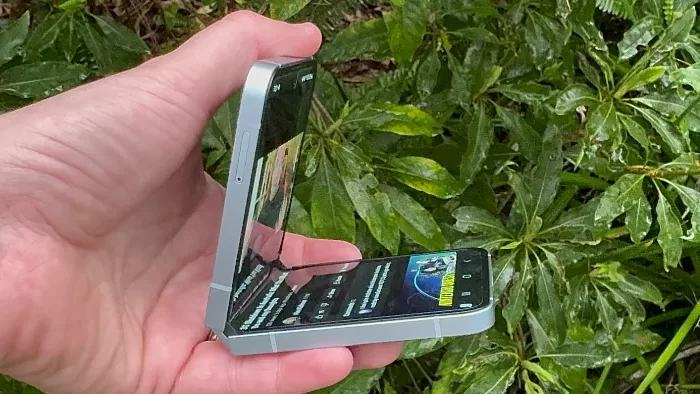
The underlying design of the Galaxy Z Flip6 hasn’t changed massively from last year’s iteration. On the inside you’ll find a 6.7 inch 120Hz capable AMOLED display with a resolution of 2640x1080. On the outside, the cover display measures in at 3.4 inches with a 720x748 pixel resolution.
Where Samsung has mixed it up a little is with the inclusion of an all-aluminium frame that feels really sold in the hand, along with a new range of matte colours for the rear of the phone. Here it does step up to the Razr 50 Ultra and its three colour choices, with a total of seven different hues to pick from. Everywhere you can buy the Galaxy Z Flip6 will sell you one with your choice of Blue, Yellow, Mint or Silver Shadow hues, but if you want the Crafted Black, White or Peach finishes, those are Samsung Online Store exclusives.
There’s no sign of the bespoke colour options that you could pick from at an additional cost for the Z Flip3 or Z Flip4, but then again they weren’t offered for the Z Flip5 either.
The Z Flip 5's design is elegant while offering a distinctly different view of what a flip phone might look like relative to the Razr 50 Ultra and its entirely rounded corners.
It’s a folding phone, so there is a crease in the middle of the primary display, but as with the Razr 50 Ultra, it feels a little flatter and less intrusive than on prior models – though I admit that might just be a perceptual matter on my part.
The physical design of the Galaxy Z Flip6 isn’t just aesthetically pleasing, but also more durable than its predecessor.
While I didn’t have an array of Flip6 phones to explicitly drop test (and I don’t favour that kind of testing without proper scientific process behind it), its Corning Gorilla Glass Victus2 should be more durable as a matter of course, but what really excites me about the Galaxy Z Flip6 is that Samsung’s finally delivering foldable phones with a level of dust resistance, not just water resistance.
The Galaxy Z Flip5, for example, was IPX8 rated, which meant it should survive simple water immersion, but had no rated resistance against dust incursions. Comparatively, the Galaxy Z Flip6 is rated at IP48, so it retains its water resistance characteristics while adding tested dust incursion resistance as well.
Also read
Why your waterproof phone isn’t actually “waterproof” the way you think it is
No, this doesn’t mean you can bury the Galaxy Z Flip6 on a desert island for a few years and return and expect it to be fine; that “4” rating essentially means it’s been tested with small solid object or insect incursions rather than talcum powder.
Still, it’s a start on the journey towards a more robust IP68 or IP69 rated foldable phone – and that’s a big plus.
Camera

It’s long annoyed me that for the price you pay for flagship folding phones, they don’t actually have the best cameras that each manufacturer makes.
Samsung has made some moves to improve the camera setup on the Galaxy Z Flip6, boosting the primary wide lens to 50MP while the ultrawide stays at 12MP and the selfie camera at 10MP, which isn’t nothing… but it’s a pretty far step from what you can get on a Samsung non-folding phone for this kind of money.
It also sits in rather stark contrast to what Motorola did with the Razr 50 Ultra, swapping out ultrawide lenses for telephoto ones. Admittedly there is something of a utility play there; telephoto lenses tend to favour shots of people, animals or other personal matters, while ultra-wide lenses are typically better for landscapes or wider group photos.
I’ve made my own position on this clear; I prefer telephoto for that personal touch over ultrawide lenses, and especially at this price point. Given that the Galaxy Z Flip6 has risen in price year on year, however, I do wish Samsung had done a little more to improve the Galaxy Z Flip6’s cameras to justify the price point this year.
The lack of zoom does mean that you’re playing in purely digital territory when it comes to getting closer to your subject, though at least here the 50MP sensor can be cropped down without too much quality loss at between 2x to 4x zoom. Max it out at 10x zoom, however and the cracks do start to show in images quickly.
All of which is not to say that the Galaxy Z Flip6 has bad cameras or produces terribly unpleasant photos. They do tend to bear the classic Samsung signs of slightly oversaturated colours in post-processing, but then a lot of people do like that sort of approach.
Of course I can’t ignore the fact that the other aspect of the Galaxy Z Flip6’s photo arsenal is the inclusion of AI-led features. These include object removal, a la the Pixel’s Magic Eraser, but also the ability to sketch out items for Galaxy AI to add to pictures.
So how well does this work? Here’s a simple, rather dull shot of a shelf in my office, taken with the Galaxy Z Flip6. It's this pixellated, by the way, because I took it at 10x zoom, but that's not the point I'm trying to make here.
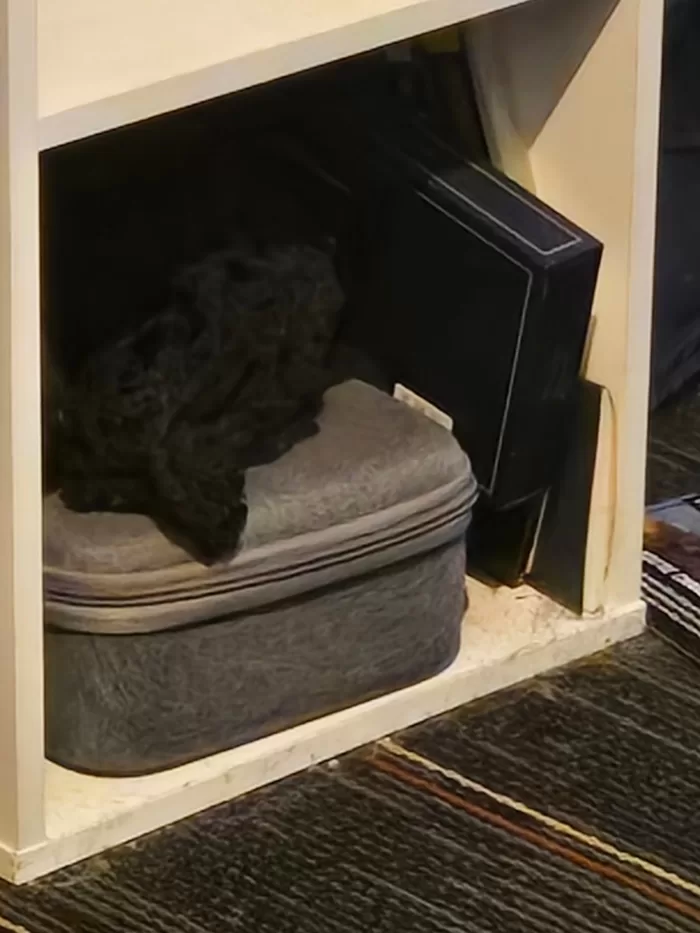
SO EXCITING.
I like cats – you might have gathered – but I can’t draw them very well.

I wasn't lying about the lack of drawing talent, as you can see.
One quick sprinkling of Galaxy AI later, and here’s my new cat.

My other cats are NOT going to be happy about this. Good job he doesn't exist, really.
I approve of the automatic AI watermarking, not that this would be that hard to visually remove. The cat isn’t entirely realistic in this frame, and it gets even wilder if I choose to delete it from the picture entirely. You’d think that it would just restore to the original, right?
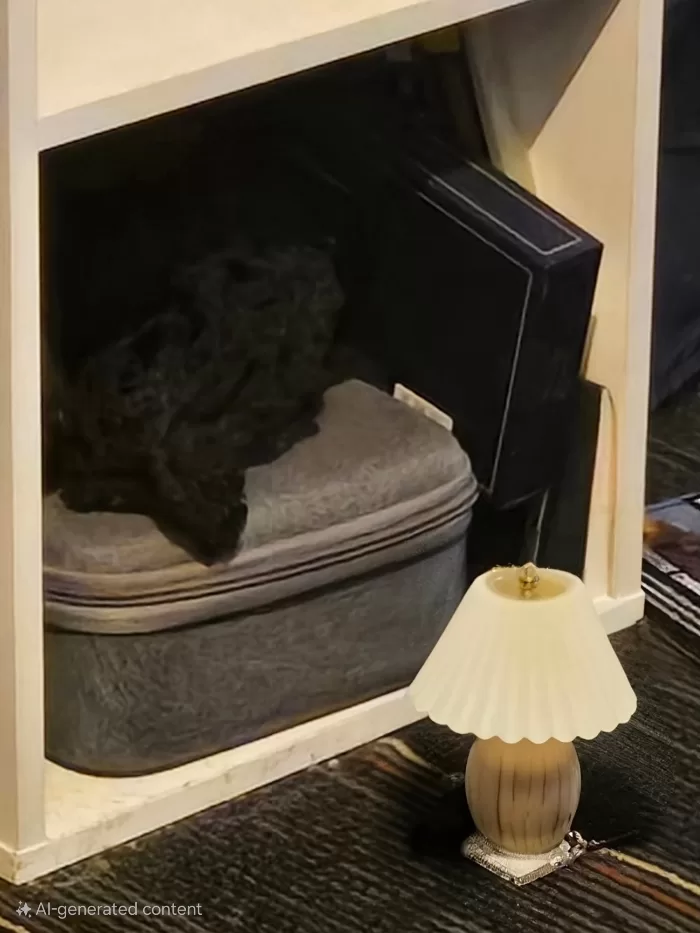
Nope. Now I have a lamp. How you get from "Cat" to "Lamp" befuddles me.
To be transparent and fair, AI generation creates new copies; if I want my dull shelves shot it’s still in my photo reel all the time, but this does show some of the limitations of the AI models being used.
Very often for my own cat mania, even when changing up the pen colour – otherwise you only ever get white cats – I’d still end up with AI monstrosities that looked like crude cut and paste jobs rather than actual elements within a photo.
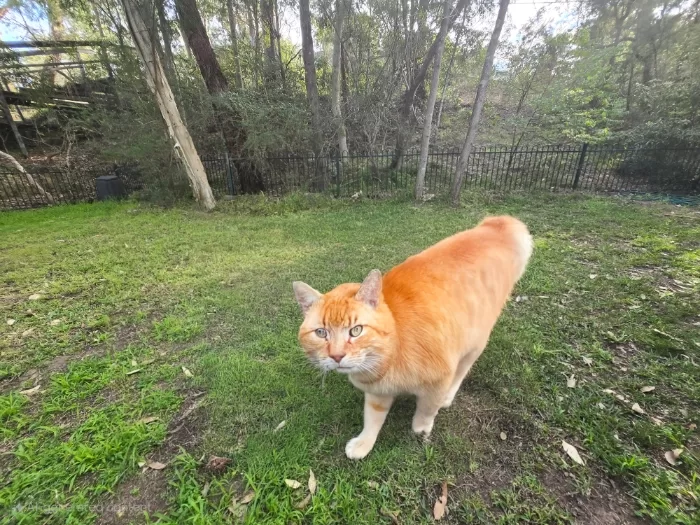
WHAT IS THIS GIGANTIC THREE-LEGGED MONSTROSITY?
The inbuilt AI portrait studio, in the meantime can take your selfies and render them in cartoon, watercolour or sketch styles. Results are mixed, generally not that great or useful, marking this out as much more of a gimmick than anything else.
If I start from this selfie:

Oh look, it's me. Photo taken with the Galaxy Z Flip6's selfie camera. Note: Wearing jumper, has blue eyes and no hair on head.
With a little sprinkling of Galaxy AI I got… whoever this guy is:

I'm pretty sure this dude wants me to invest in his crypto scam.
Also him:

In which Galaxy AI brings out my inner Claudio Castagnoli. Also, where did the shirt come from?
And this dude:

Who is this? Has Galaxy AI sent me someone else's picture?
This one, which incorporates actual elements of the photo is just terrifying.

Though I will admit I do rather like this sketch view of me:

Samsung Galaxy Z Flip6 Sample (non AI) Photos
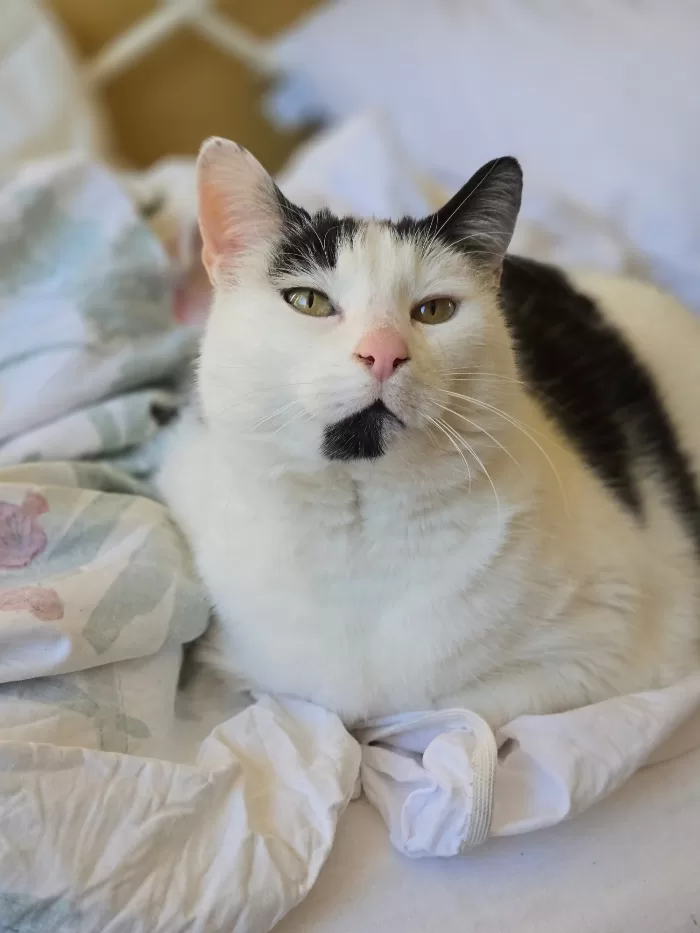
Actual cats are better than AI ones.
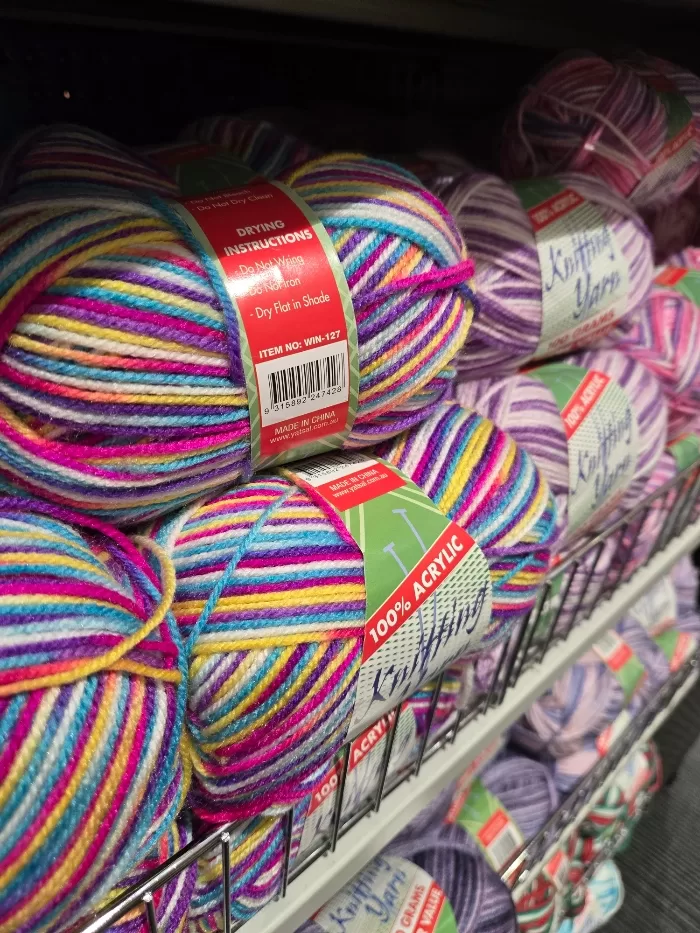
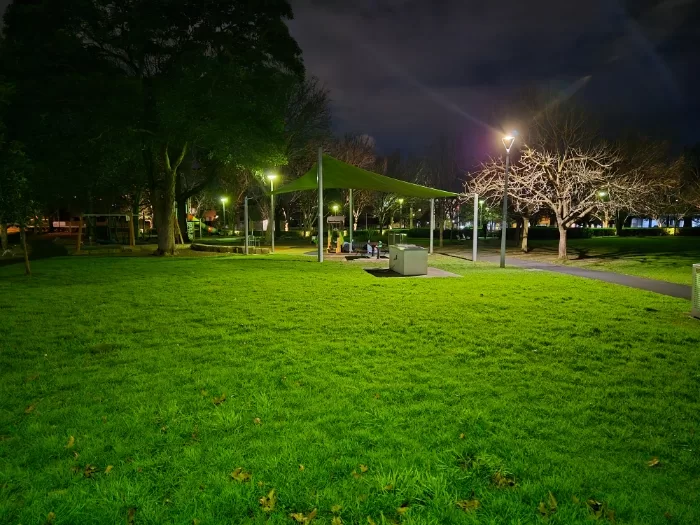


Performance
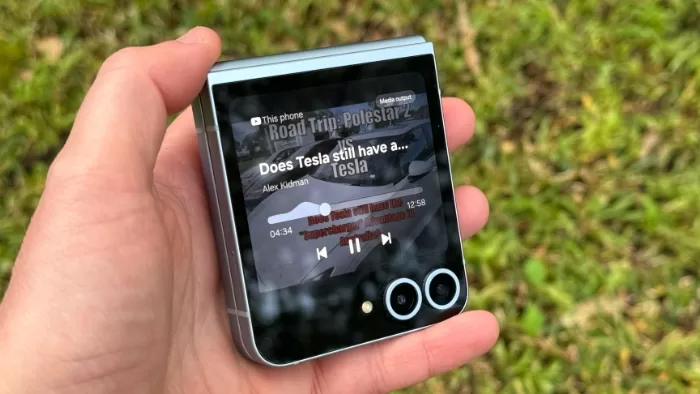
The Galaxy Z Flip6 is built around the Qualcomm Snapdragon 8 Gen 3 For Galaxy SoC, paired up with 12GB of RAM and either 256GB or 512GB of onboard storage.
It’s rather easily the most powerful combination you can get in a flip foldable right now – and maybe for the rest of the year, though we’ll have to see what the likes of Oppo or Google might bring to the local foldable market for that to be definite.
This is most clearly shown in Geekbench 6’s CPU test, where the Galaxy Z Flip6 bests all comers:
It’s less of an outright victory with 3DMark’s Wild Life Extreme test. I’m hopeful I can get hold of a Z Fold6 to see if that’s even better than the Z Fold5 in graphics terms, though those larger foldables do serve a slightly different market.
While the Z Flip6 is powerful, we're still very much in the "Supercar" territory of smartphone here, with engines that go above and beyond what any Android app -- including gaming heavy hitters -- can really stress out. That's true for the competing Motorola Razr 50 Ultra as well, so while it's slower in a straight line benchmark sense, it's not something you'll notice in day to day app usage.
The Galaxy Z Flip6 is an Android 14 phone that, like Samsung’s other flagship phones of late will see seven full years worth of OS and security updates.
I do love this aspect of Samsung’s flagships, because while some may argue that people change phones faster than this, adding in guarantees around OS upgrades means phones can last longer (environmentally/financially friendly) and be worth more to somebody else if you did want to trade them in or give them to friends or family when you upgrade.
You do also get Galaxy AI features like the aforementioned photo editing features, as well as an inbuilt "Interpreter" translation app that can smartly use the external folded display to show both sides of a conversation at once. It works... but not particularly quickly in my tests, and with the usual caveats around AI language translation that sometimes what it comes up with is very weird, especially if you point it towards faster flowing speech.
Galaxy AI hasn't yet thrilled me, but the rest of the Z Flip6 experience is good, which should point to the Galaxy Z Flip6 being the flip foldable of choice this year. That much power can rather easily run anything you throw at it, whether it’s a serious app or a hardcore Android gaming experience.
However, I’m not so convinced, and it all rests on Samsung’s choices around the cover display. This is an essential feature of any foldable, and over the years we’ve seen the cover screens on Samsung’s Galaxy Flip phones change size and shape, but not this year while its primary competitor jumped up to a 4 inch screen.
However, it’s not just a matter of size, but (ahem) as they say, what you do with it.
Samsung’s primary approach here is widget-based, which is fine if you just want essential notifications and a few simple panels… but comparatively, Motorola makes it possible to run any Android app on its 4 inch display.

Yes, you can brute force your way to doing this with the Galaxy Z Flip6, but it’s either via Samsung Labs' own limited "experimental" feature, which has a ridiculously small number of supported apps in play right now, or via a third party app called Good Lock.
Good Lock isn’t new for the Galaxy Z Flip6 – it’s been around a while – and a lot of writing around it seems to suggest it’s an in-house Samsung app. I can’t find any evidence this is true at all; it’s listed in the Samsung Galaxy store as being from a company called Good Lock Labs, and if Samsung wanted this functionality for the Galaxy Z Flip6, why wouldn’t it build it directly into OneUI instead anyway?
There are two problems here with Good Lock. Yes, it works with a bit of kludgy widget selection, but any future OS or OneUI update could in theory stop it working if Samsung decided it didn’t want it to.
True, Samsung hasn’t done that for prior Flip generations, but then the issue of the 3.4 inch screen and its low resolution come into play.
Not every app is going to suit a cover screen anyway, but the comparison between the 4 inch 1080x1272 screen of the Razr 50 Ultra and the 3.4 inch 720x748 display of the Galaxy Z Flip6 does not favour the Flip6 in any way at all.
The selling proposition of a foldable flip phone does come down to the ways you can interact with that secondary screen; if you don’t need the secondary screen you shouldn’t be buying one at all, but if you limit its utility – which Samsung has done at both a hardware and software level – it’s automatically a less compelling prospect.
Battery

The Galaxy Z Flip6 features a 4,000mAh sealed battery, which means it both improves on its predecessor’s 3,700mAh battery in capacity while also keeping pace with the Motorola Razr 50 Ultra.
Flip phones have always had slightly smaller batteries than their regular Android counterparts, a natural enough consequence of having to split the phone in half with a hinge, so seeing any kind of battery capacity improvement is a plus – as long as it leads to longer actual battery life.
Here my experience was mixed. First of all, I ran it through my standard YouTube streaming test. Here’s how it compared:
It’s pleasing that the Galaxy Z Flip6 managed a better result than the Flip5, but Samsung is still trailing Motorola in terms of how well it manages its power.
That figure played through in my day to day testing, though it is worth noting that in most circumstances the Galaxy Z Flip6 managed a day’s usage without specific issues. As always if you spend hours running heavy duty apps or recording video or any other intensive task, you can send a phone flat within a day.
The Galaxy Z Flip6 doesn’t ship with a power adaptor – that’s across the range for premium Samsung phones these days – but will take charge via USB-C at up to 25W or via Qi – but annoyingly not Qi2 – at 15W. If you did want to sap its 4,000mAh battery for other devices, it’ll also do reverse wireless charging to other Qi devices, although only at 4.5W.
Samsung Galaxy Z Flip6: Alex’s Verdict

Technically, the Galaxy Z Flip6 is a great smartphone. The build quality is superb, it’s got the best dust resistance of any flip foldable to date and its processor gives it top-notch power and then some.
However, it is more expensive than its competition, its battery life is lower than its competition, and the utility of its external display is compromised because of its smaller lower resolution screen and Samsung’s decisions around Android app behaviour on that screen.
This somewhat mimics the case I hit last year, pitting the Motorola Razr 40 Ultra against the Galaxy Z Flip5. There I ended up still preferring the Razr, but it was with the notable qualification that the Z Flip5 was a much more powerful phone, and by a significant margin. There's a performance margin between the Galaxy Z Flip6 and the Razr 50 Ultra too, but it's a much smaller one that most users aren't likely to particularly notice in day-to-day usage.
As a flip phone in a standalone sense, you certainly wouldn’t be disappointed if you got the Galaxy Z Flip6. However, in a wider comparative market, the flip phone I’d be buying first would be the Motorola Razr 50 Ultra.
Was this review useful to you? Support independent media by dropping a dollar or two in the tip jar below!
Samsung Galaxy Z Flip6: Pricing and availability
The Samsung Galaxy Z Flip6 retails in Australia for $1799 with 256GB of onboard storage, or $1999 with 512GB of onboard storage.
 |
Buy The Samsung Galaxy Z Flip6! | Buy On Amazon |





